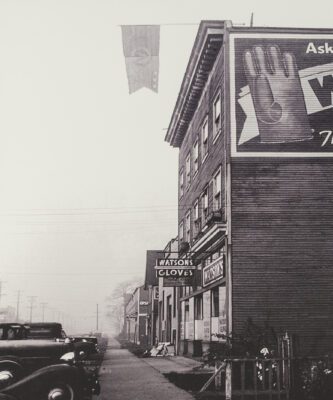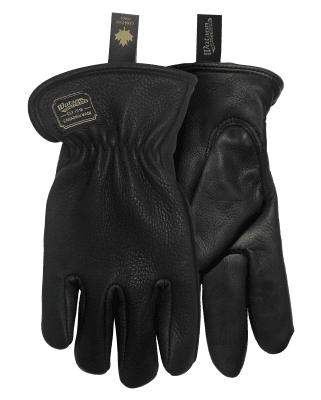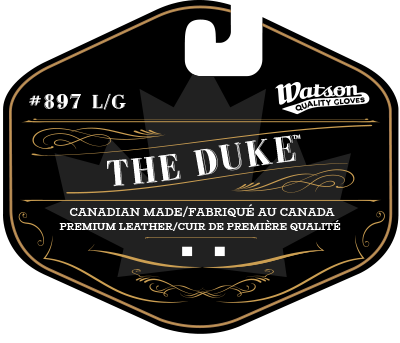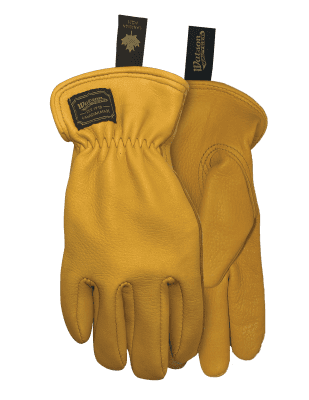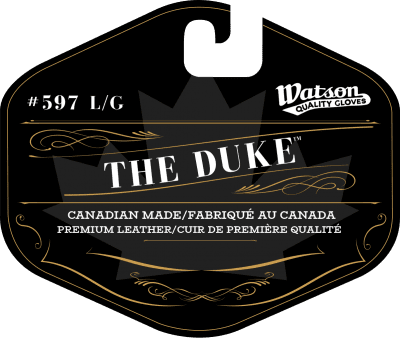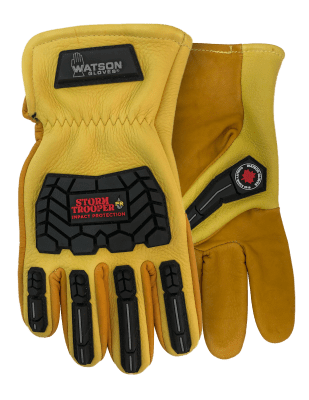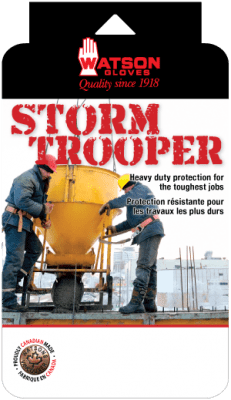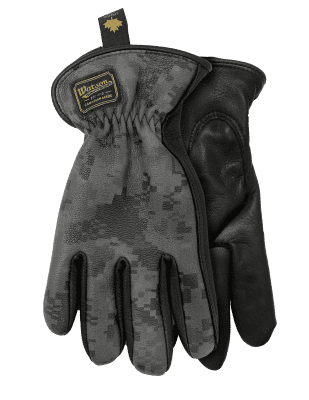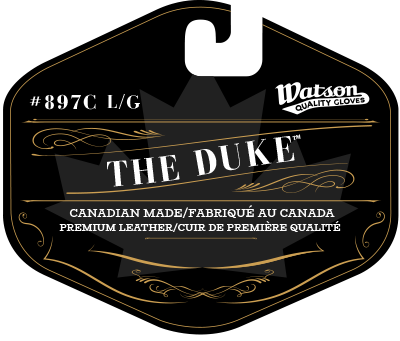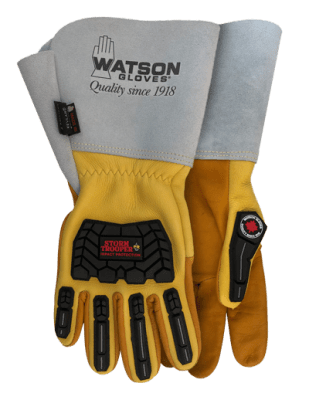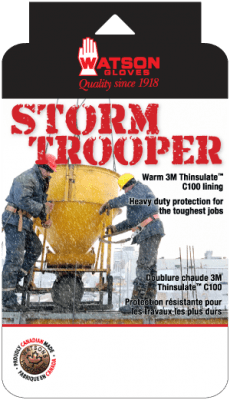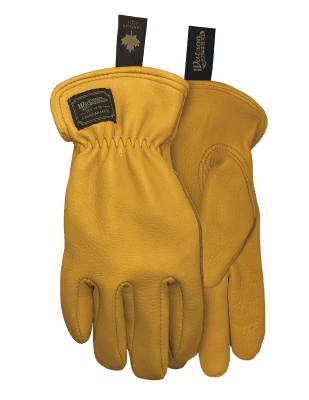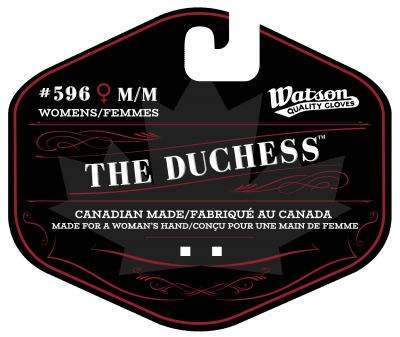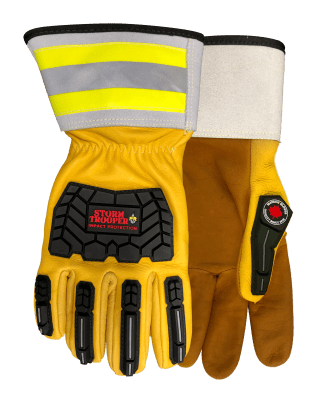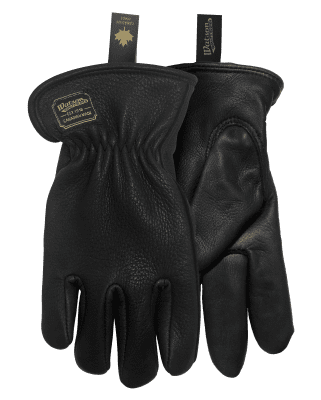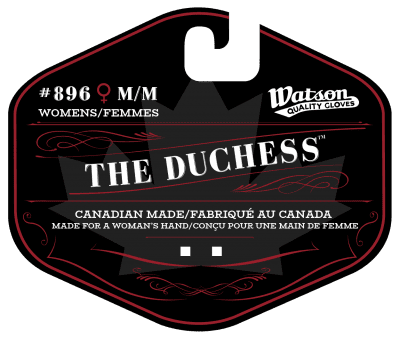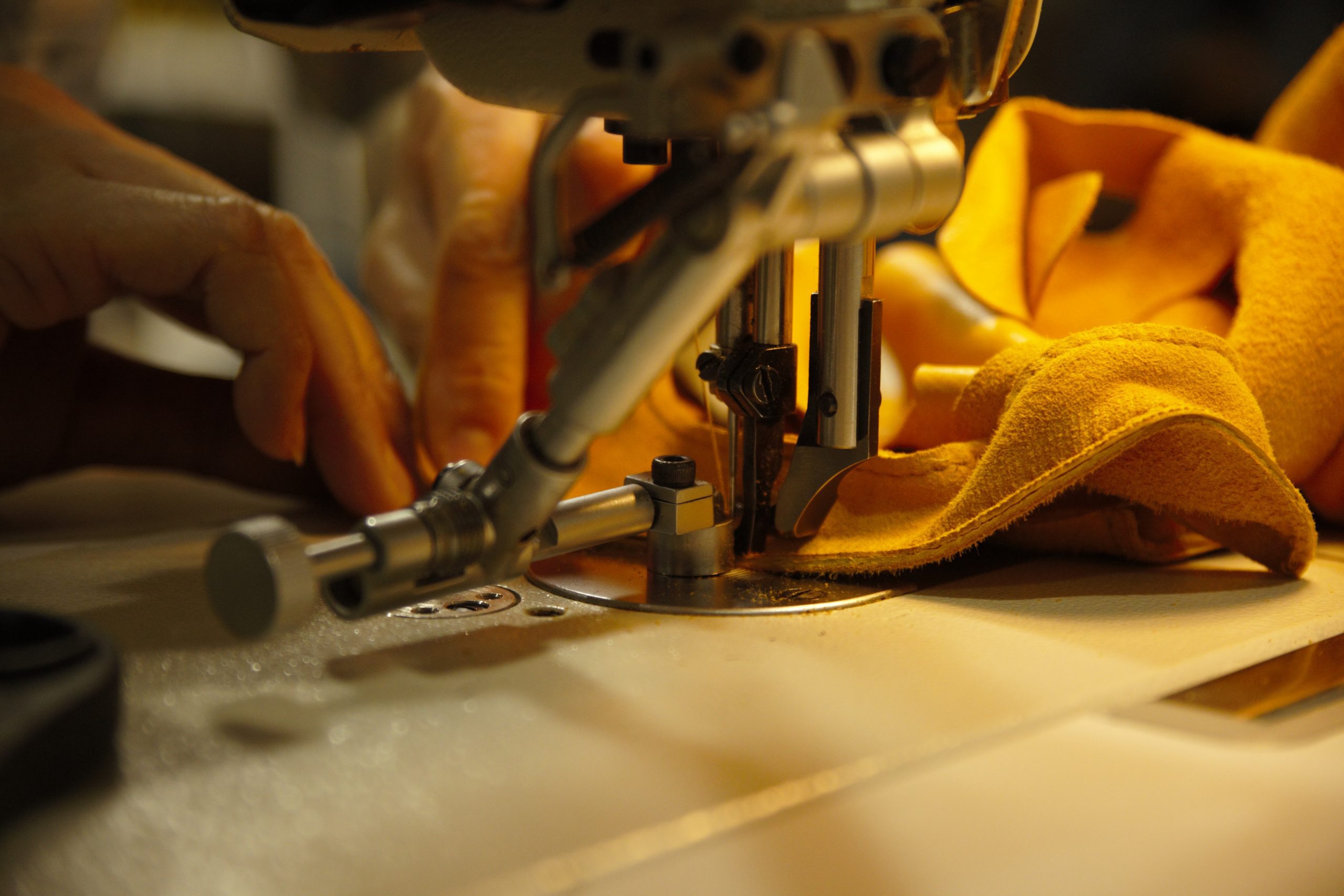
Inside the Watson Gloves Factory – Learn How Our Gloves Are Made
For over 100 years, our Canadian factory has been the heart and soul of Watson Gloves. In 1918, they originally made handcrafted quality gloves for those working in saw mills, mines, logging camps, and farms, and also for industries requiring gloves during World War I. The work in our glove factory was very much a skilled job and still is today. Although over 100 years have passed, we still have a very ‘hands-on’ approach in making our gloves. Check out the 5 steps it takes to make our quality Watson gloves below!
1) Cutting
The first step to making our gloves is cutting the material. There are two cut jobs – cutting palms (front and back, and sometimes the patch) and cutting fittings (the back and palm patches, linings, cuffs, gauntlets, etc.). A variety of leathers are cut, such as cow, goat, deer, and elk.
When cutting leather, you can’t just cut willy nilly. Leather stretches, and thus, needs to be cut in the right stretch direction. If leather is cut vertically, the finger areas can stretch, and unless you’re Edward Scissorhands or a pro basketball player, for most people, vertically stretched gloves would not be deemed a suitable fit. Thus, it’s important to cut the leather horizontally to get the right fit and to maximize the yield.
In the cutting team, we have four cutters with over 115 years of combined experience – the longest being Tommy Chan who is currently on his 45th year with us at Watson Gloves (and the two after him both have over 30 years of experience)! We continue to keep this a manual task, as automated equipment are not capable yet to determine stretch direction, and thus, can compromise the quality of our gloves – and that’s a big no for us!

Pic #1: Leather being cut

Pic #2: Correct cut for leather (stretched horizontally)

Pic #3: Leather bundled up in the kitting area ready to be sewn
After bulk of materials are cut and sorted, they are bundled up, sent to the kitting area, and picked up by our sewers to begin sewing.
2) Sewing
For some, sewing is a hobby or an occasional task at home. Here at Watson Gloves, we pride ourselves on having skilled sewers. And like cutters, it’s a job that requires precision, as there’s very little room for error. All gloves are sewn inside out. When sewing gloves together, it’s not like sewing two pieces of paper that’s the same size since you’re forming unique pockets for each of the fingers. The glove leather has a narrow side and wide side, so it must be folded correctly with the top and bottom lined up properly, otherwise, the leather would pull funny, resulting in a twisted finger. And again, like stretched fingers, gloves with twisted finger shapes probably won’t fit most people.
Leather is a different kind of textile to shirts. Shirts are typically considered a weave, like mesh, so the sewing needle goes in between the weave. Leather, however, is not a weave; rather, it’s completely solid. Thus, every time you sew into leather, a little hole is cut out for the needle to go through. You can imagine then that this precision-intensive task is not so forgiving – if you accidentally sew the wrong hole, then that entire piece is gone, as there is now a hole in the glove. Welding gloves with erroneous holes for instance, are now susceptible to heat and other hazards penetrating through.

Sewing station with our skillful sewers working
The sewer with the longest tenure has been working with us for 14 years. And many others in the sewing room are soon reaching 10 years! We also have long-time veterans with over 40 years of experience who have retired but frequently drop by and are always considered family, as we still invite them to our annual parties and events.
3) Turning
Steps on turning gloves right way out
As gloves are sewn inside out, we have to turn the gloves right way out manually. Don’t be deceived – although it’s a quick task, you cannot muscle it through, as you’ll tire out quickly. You have to be fluid with your technique, as the way to turn gloves is dependent on the type of glove, leather, lining, etc. If you’re turning a deerskin leather glove, for example, it’s very quick, as it’s a light glove. On the other hand, a hefty impact resistant TPR glove requires a different technique. This is also where pieces, such as snaps and buttons are added onto the glove. After that, we move on to laying off.
4) Laying Off
This is where the final shaping happens. Although leather is great material that forms and fits to your hands, the magic of bringing it to fitted shape still needs to be performed. Here, all materials are cut to size and then put through its respective hand-shaped iron based on size. The irons are insanely hot (you don’t want to touch them!), and the heat helps relax the leather, which allows the glove to stretch out to the appropriate size. Additionally, fingertips are shaped and wrinkles are worked out. And voila, hot off the press, you got quality Watson gloves. But wait! Like editors in a newspaper company, our fresh gloves need to be inspected for quality control.
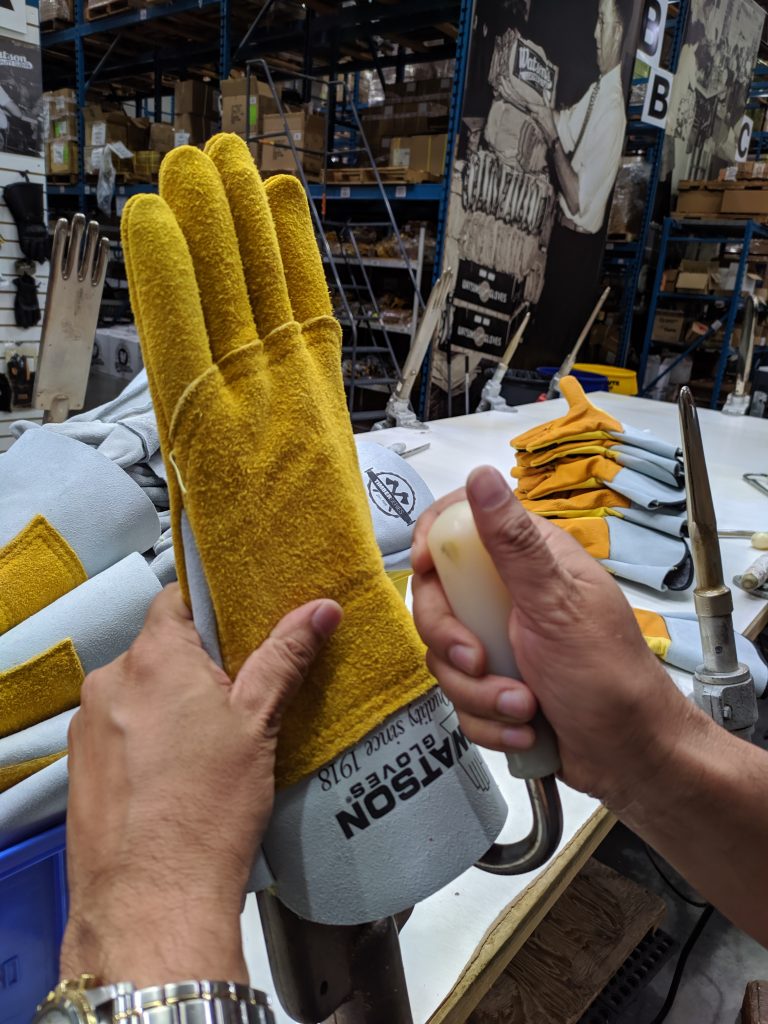
Pic #1: Glove and fingertips being shaped

Pic #2: Station where gloves are shaped. Note the many hand-shaped irons in different sizes
5) Quality Control & Tagging
Before our gloves go out the door, they are inspected for flaws, missed stitches, and tiny holes. They are either sent back if they can be repaired or go to seconds as reusable material for other purposes if they cannot. Finally, our wonderful, iconic tags are put on and the gloves are bundled up, ready to be shipped out to their new homes wherever hand protection is needed.
Although we have a final quality check before gloves are sent out, quality control is done throughout the whole glove-making process. Special lighting is placed in our cutting, sewing, and quality control stations so that it allows our workers to see the leather and stitching better. We also get plenty of natural sunlight shining into our factory, with three skylight windows and large side windows with views looking out to the natural scenery outside our building. Our 1.75% glove defect rate (anything below 2% is considered outstanding) truly shows the work and craftsmanship of our gloves, and large credit goes to every team in the factory.

Pic #1: The final step – putting our iconic Watson tags

Pic #2: Gloves packaged and ready to be shipped out

Pic #3: LED lighting & skylight window
Dealing With COVID-19
In this past year, we were hit with a global pandemic. It’s been a challenge navigating this crisis for many of us. But time and time again, Watson Gloves has proven to stand up to the task and serve the public, whether that’s meeting the demand for gloves during the World Wars, or stepping up in 2020 and pivoting to make Face Masks along with our gloves. Many days of overtime, a new production line, and a restructuring of the factory layout were just a few events that took place in the factory during these times. As a result, we’ve been able to continue making gloves and face masks for the public without a hitch.
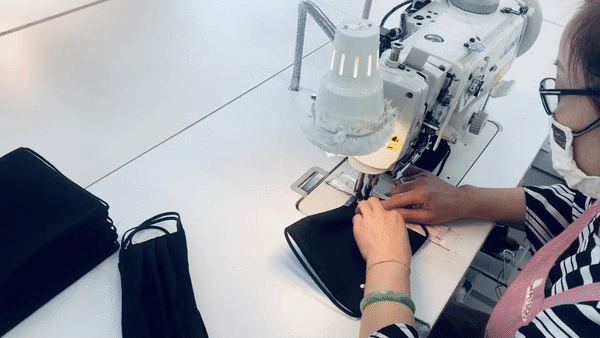
Sewer hard at work making our Face Masks
Watson Gloves – Handcrafted and Quality Made
When we say our Canadian Made products are handcrafted and quality made, it isn’t marketing fluff – we truly mean it. Although many glove manufacturers have moved more towards automated processes to make gloves, there is a large potential for errors that machines can’t detect. As a result, these manufacturers can run into a higher defect rate, which can lead to a greater number of defective gloves going out the door. In our factory, we pride ourselves on having skilled workers (many who’ve been with us for many years!) making the gloves you’ve been trusting for over 100 years.
Here at Watson Gloves, we stand by providing quality hand protection. And in the factory, the immense pride and love in the work they do shows in the quality craftsmanship seen in our finished products. Handcrafted. Quality made. Since 1918.
Sign up for our newsletter!
Stay up to date with the latest Watson Gloves news, releases, and industry updates by signing up to our newsletter!
897 The Duke
897
The Duke
Premium full-grain deerskin leather Drivers style with inset thumb Snug-fitting shirred elastic wrist and slip-on style cuff Heritage pull tab… Read more »
597 The Duke
597
The Duke
Premium full-grain deerskin leather Drivers style with inset thumb Snug-fitting shirred elastic wrist and slip-on style cuff Heritage pull tab… Read more »
5782 Storm Trooper
5782
Storm Trooper
Full-grain deerskin leather back with Dryhide™ water and oil resistant cowhide leather palm Stitched with Kevlar® Flame resistant heavy duty… Read more »
897C The Duke
897C
The Duke
Goatskin digital camo leather Drivers style with inset thumb Snug-fitting shirred elastic wrist and slip-on style cuff Heritage pull tab… Read more »
5782GCR Storm Trooper
5782GCR
Storm Trooper
Full-grain deerskin leather back with Dryhide™ oil and water resistant cowhide leather palm Stitched with Kevlar® Impact protection heavy duty flame… Read more »
596 The Duchess
596
The Duchess
Premium full-grain deerskin leather Drivers style with inset thumb Snug-fitting shirred elastic wrist and slip-on style cuff Heritage pull tab… Read more »
5782CR Storm Trooper
5782CR
Storm Trooper
Smooth full-grain deerskin leather back with Dryhide™ water and oil resistant cowhide leather palm Stitched with Kevlar® Impact protection heavy… Read more »
896 The Duchess
896
The Duchess
Premium full-grain deerskin leather Drivers style with inset thumb Snug-fitting shirred elastic wrist and slip-on style cuff Heritage pull tab… Read more »
896C The Duchess
896C
The Duchess
Goatskin digital camo leather Drivers style with inset thumb Snug-fitting shirred elastic wrist and slip-on style cuff Heritage pull tab… Read more »

